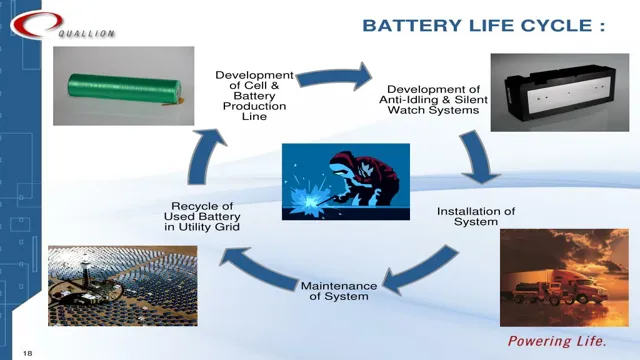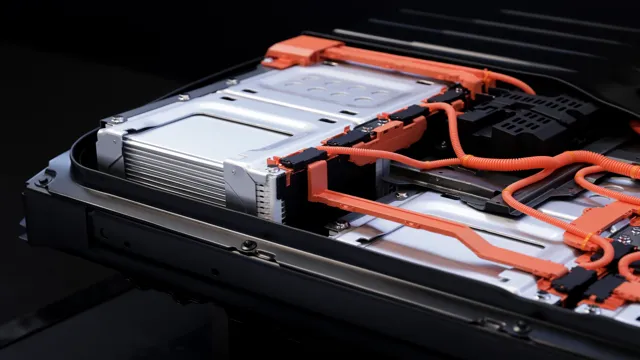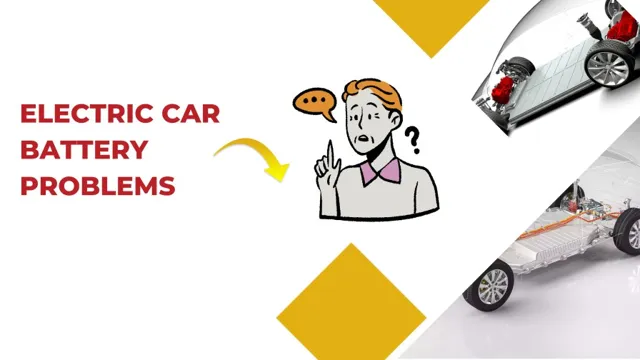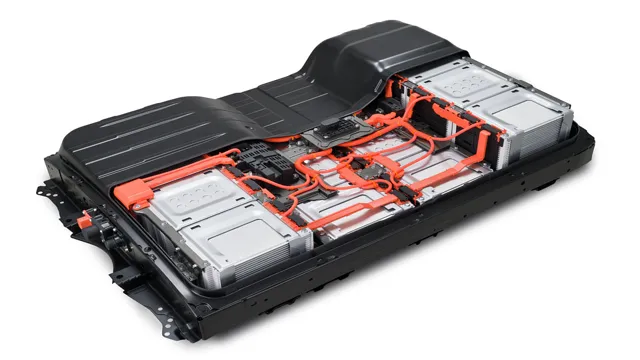The Life and Death of Electric Car Batteries: Understanding the Battery Life Cycle
Electric cars are the vehicles of the future, and for good reason. They are environmentally friendly, cost-efficient, and provide a smooth driving experience. However, their batteries continue to be a topic of concern for many potential buyers.
How long do they last, and what happens when they die out? Understanding the electric car battery life cycle is critical for anyone considering purchasing an electric car. In this blog, we will take a look at some of the key factors that impact the lifespan of these batteries and what can be done to extend their use. From the manufacturing process to maintenance and disposal, we will explore every aspect of the electric car battery life cycle.
So let’s dive in and discover the ins and outs of these game-changing power sources.
Introduction
Electric car battery life cycle is an essential factor to consider when purchasing an electric vehicle. The battery life cycle refers to the number of charge and discharge cycles a battery goes through before it starts to degrade. Unlike traditional vehicles that rely solely on internal combustion engines, electric cars run on lithium-ion batteries that require proper maintenance and handling to ensure maximum efficiency and longevity.
A typical electric vehicle battery can last up to ten years, with an average range of 100-200 miles per charge. Using a fast charger or overcharging the battery can significantly reduce the battery life cycle. Therefore, it is important to properly care for and maintain your electric car battery to ensure its long-term effectiveness and functionality.
Regular maintenance, such as monitoring the battery temperature, avoiding extreme temperatures, and keeping the battery charged between 20-80%, can extend the life cycle of your electric car battery.
What is a Battery Life Cycle?
When we talk about batteries, we often hear the phrase “battery life cycle.” But what exactly does it mean? A battery life cycle refers to the number of times a battery can be charged and discharged before it reaches the end of its useful life. This is determined by a range of factors such as the type of battery, the way it’s used, and how it’s maintained.
Some batteries can survive over 1000 cycles while others may only manage 200 or less. This cycle is important because it indicates how long a battery will last before needing replacement and what kind of performance you can expect from it over time. Therefore, understanding what a battery life cycle is will help you make informed decisions when it comes to purchasing, using and maintaining batteries for your various electronic devices.
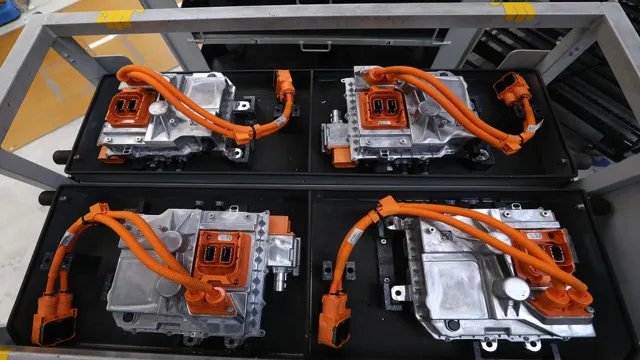
Why is it Important for Electric Cars?
Electric Cars Introduction: Electric cars have been gaining popularity in recent years as an eco-friendly alternative to traditional petrol vehicles. One of the key benefits of electric cars is their lower carbon emissions compared to petrol cars, which contributes to mitigating climate change. To ensure the continued growth and success of electric cars, it is important to consider all the factors that make them efficient and sustainable.
From the type of battery used to the charging stations available, every aspect of electric cars plays a crucial role. One important factor that cannot be overlooked is the importance of appropriate tires for electric cars. In this blog post, we will discuss why appropriate tires are important for electric cars.
Factors Affecting Electric Car Battery Life Cycle
The electric car battery life cycle is a crucial part of the overall performance of an electric vehicle. Various factors can affect the battery life cycle, including temperature, driving habits, charging habits, and battery chemistry. High temperatures can reduce the battery’s lifespan while low temperatures can affect its performance.
Driving habits, such as sudden acceleration and hard braking, can also impact the battery life cycle. Charging habits, such as using fast chargers or fully discharging the battery frequently, can cause damage to the battery over time. Battery chemistry refers to the type of battery used in the electric car, and different chemistries offer different performance levels and lifespans.
Manufacturers are continuously working to improve battery technology and increase the battery life cycle, but it is still important for electric car owners to take care of their battery to ensure optimal performance and longevity.
Temperature
Temperature Electric car battery life cycle is affected by a multitude of factors, one of which is temperature. It’s important to keep in mind that electric car batteries work best in moderate temperatures, preferably between 20 and 30 degrees Celsius. If the battery is exposed to temperatures that are too cold or too hot, it may cause damage that can lead to a shorter lifespan for the battery.
Additionally, extreme temperatures can impact the charging speed and efficiency of the battery, making it work slower and less optimally. Just like people, batteries work best when they’re kept at a comfortable temperature range. It’s important to keep this in mind when considering the longevity of your electric car battery.
Taking measures to protect your battery from extreme temperatures can ultimately extend its lifespan and keep your car running more efficiently for a longer period of time.
Charging and Discharging Frequency
“Electric Car Battery Life Cycle” Electric car batteries have a limited lifespan, and one of the most critical factors affecting their life is how frequently they’re charged and discharged. The battery’s lifespan is determined by the number of charge and discharge cycles it undergoes. The more frequently a battery is charged and discharged, the shorter its lifespan will be.
Additionally, the depth of discharge (DOD) – how much energy is consumed from the battery’s total capacity – also affects its lifespan. A battery that is frequently discharged to a deep DOD level will have a shorter lifespan compared to one that is discharged at a shallower level. Therefore, it’s important to keep the battery charged as much as possible and avoid deep discharges to prolong its lifespan.
While it may be tempting to run the battery to its lowest level before charging, doing so can severely reduce its longevity. By taking care of electric car batteries and keeping them charged without frequently discharging them deep, car owners can ensure that their cars perform optimally for an extended period.
Depth of Discharge
One of the most critical factors affecting the life cycle of electric car batteries is the depth of discharge. Depth of discharge refers to how much charge is drawn from the battery before it is recharged. The deeper the discharge, the shorter the battery’s lifespan.
This is because deep discharging increases the stress on the battery cells, causing them to degrade more quickly over time. Additionally, frequent deep discharging can lead to a phenomenon known as lithium plating, where lithium ions build up on the battery’s anode, reducing its capacity and lifespan. To extend the life of your electric car’s battery, it’s recommended to keep the depth of discharge below 80% to 90%.
This means recharging your car before the battery drops below 20-30% charge. By following this simple care regimen, you can minimize the stress on your battery, and maximize its lifespan, ensuring long-lasting performance and range for your electric vehicle.
Maximizing Electric Car Battery Life Cycle
Electric car battery life cycle can be maximized by following a few simple tips. One of the most important things is to avoid overcharging the battery. Even though most electric cars have safeguards to prevent overcharging, it’s still important to monitor the charge and unplug the car when it’s full.
Additionally, extreme temperatures can have a negative impact on the battery’s performance, so parking in a garage or shaded area can help prevent overheating. It’s also recommended to avoid rapid charging whenever possible, as this can cause undue stress on the battery. By following these tips and properly maintaining the battery, you can extend its lifespan, which can ultimately save you money in the long run.
So, if you’re planning on investing in an electric car, remember to take care of the battery and make it last as long as possible.
Proper Charging Habits
Electric car battery life cycle Proper charging habits are essential to maximize your electric car battery life cycle. Firstly, it’s vital to avoid charging your electric vehicle (EV) with too high or too low a charge level since it can negatively impact your battery’s health. Ideally, aim to charge your EV’s battery between 20%-80% to prolong its life cycle.
Avoid waiting until your battery drains completely, and don’t overcharge it either as both will cause stress on the battery. Secondly, it’s recommended to plug in your EV and charge it overnight when you’re asleep or when you’re at work. It’s much better to charge your battery slowly, known as Level 2 charging, instead of quickly, known as Level 3 charging, since the latter might harm your battery’s health.
Lastly, keep in mind that you should charge your EV frequently since battery performance is better when the cells don’t discharge entirely, but instead, they’re always partially charged. If you don’t use your EV,, plug it in to maintain roughly 50% charge, helping to extend your battery’s life. In conclusion, to get the most out of your electric car battery, it’s essential to develop proper charging habits such as keeping your EV partially charged, avoiding overcharging and undercharging, and charging overnight frequently.
By following these tips, you’ll better maintain your battery life cycle and save yourself money in the long run.
Routine Maintenance
Electric car battery life cycle To maximize the life cycle of an electric car battery, routine maintenance is key. One of the important factors that affect the battery life cycle is the temperature. Extreme temperatures can negatively impact battery performance and longevity.
Therefore, it’s important to park your electric car in a climate-controlled garage or shaded area during hot weather. In the winter months, ensure that the battery is fully charged and avoid leaving it exposed to freezing weather. Another important aspect of routine maintenance is keeping the battery pack within its optimal charge range.
Most electric vehicles have built-in battery management systems that regulate charging to prolong battery life. Regularly reviewing the owner’s manual and following the manufacturer’s recommended maintenance procedures can also help extend the battery life cycle. By following these routine maintenance practices, you can maximize the life of your electric car battery and enjoy driving it for years to come.
Conclusion
In the electric car battery life cycle, the battery is the heart of the vehicle. But just like our own hearts, it needs proper care and maintenance to ensure a long and healthy life. From production to disposal, each stage in the battery’s journey requires thoughtful consideration to minimize environmental impact and maximize efficiency.
So, let’s charge forward towards a greener future with responsible and sustainable practices for electric car batteries!”
FAQs
What is the typical lifespan of an electric car battery?
The typical lifespan of an electric car battery is around 8 to 10 years or 100,000 to 200,000 miles.
Can the battery in an electric car be recycled?
Yes, the battery in an electric car can be recycled. In fact, around 95% of the materials in the battery can be reused.
How can I extend the battery life of my electric car?
You can extend the battery life of your electric car by avoiding frequent deep discharge, avoiding extreme temperatures, and keeping the battery charged between 20% and 80%.
What happens to an electric car battery at the end of its life?
At the end of its life, an electric car battery can be recycled to recover valuable materials like lithium, cobalt, and nickel, or repurposed for other energy storage purposes.
